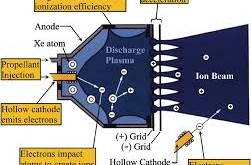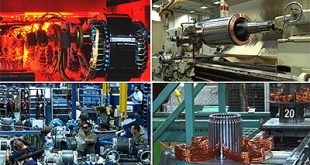Introduction In the midst of the global space race, the Moon has emerged as a pivotal destination for countries and private enterprises. The allure lies in its potential for establishing Moon bases, harnessing its mineral resources, and tapping into the vast reserves of helium-3 for future nuclear fusion power plants. …
Read More »Ion Propulsion: The Future of Space Exploration and Satellite Technology
Space propulsion systems are the heart and soul of any space mission, providing the thrust needed to navigate through the cosmos. These propulsion systems vary widely, including solid, liquid, and electric propulsion. Traditional chemical propulsion has served us well for decades, but it has its limitations, particularly for missions to …
Read More »Air-Independent Propulsion (AIP): Revolutionizing Submarines for Modern Naval Warfare
Introduction Submarines are versatile and vital assets in modern naval warfare, serving a multitude of roles that range from intelligence gathering and reconnaissance, covert insertion and extraction of special forces, attacking enemy submarines and their surface warships, mine laying, to other littoral or choke point operations. Their ability to operate …
Read More »DRACO: The Ambitious Plan for Cislunar Dominance with Nuclear-Powered Spacecraft
Introduction: The Lunar Frontier and the Strategic Significance of Cislunar Space In the contemporary global space race, nations and private entities are fervently vying to establish Moon bases and tap into the Moon’s resources, including valuable helium-3 for potential nuclear fusion power. Notably, China has made substantial strides in lunar …
Read More »Revolutionizing Military Energy Solutions: STEEP and JABS Leading the Way
The landscape of modern military operations is undergoing a profound transformation. As the challenges and complexities of the battlefield evolve, so do the energy requirements that power critical systems and operations. This shift has led to the emergence of innovative energy solutions that embrace both traditional and hybrid technologies. Among …
Read More »Mastering the Waves: Adaptable Control and Propulsion Systems Revolutionize Hybrid Ship Propulsion
Introduction In the ever-evolving world of maritime transportation, the quest for sustainable solutions has become a top priority. With the pressing need to reduce emissions and minimize the environmental impact of shipping, innovative technologies are emerging to revolutionize the industry. One such breakthrough is the development of adaptable control and …
Read More »Unleashing the Power: Demystifying Power MOSFETs in SMPS Design
Introduction Switch-mode power supplies (SMPS) are the backbone of modern electronics, enabling efficient and reliable power conversion. At the heart of every SMPS lies a key component known as the Power MOSFET. These devices play a critical role in regulating and controlling the flow of electrical power. In this article, …
Read More »Navigating the Waves of Growth: Exploring the Global Marine Hybrid Propulsion Market and Industry Trends
In a world where sustainability and environmental consciousness have taken center stage, industries are actively seeking innovative solutions to reduce their carbon footprint. The maritime sector, which has historically been associated with significant greenhouse gas emissions, is no exception to this trend. Enter the realm of marine hybrid propulsion – …
Read More »Electric motors technology enabling profound improvements on electric vehicles performance
Introduction The electric vehicle (EV) revolution is in full swing, and at the heart of this transformative shift lies the remarkable evolution of electric motor technology. From their humble beginnings, electric motors have made astonishing progress, driving profound advancements in the performance of electric vehicles. In this article, we’ll delve …
Read More »Advancing Quantum Sensing: Ultrasensitive Nanobolometers Redefine Measurement Capabilities
Introduction In the ever-evolving landscape of scientific advancements, researchers have made significant strides in developing ultrasensitive instruments capable of detecting and quantifying energy at unprecedented scales. One such breakthrough technology is the ultrasensitive nanobolometer, a remarkable device that revolutionizes measurement capabilities. By combining the sensitivity of nanobolometers with the precision …
Read More » International Defense Security & Technology Your trusted Source for News, Research and Analysis
International Defense Security & Technology Your trusted Source for News, Research and Analysis





